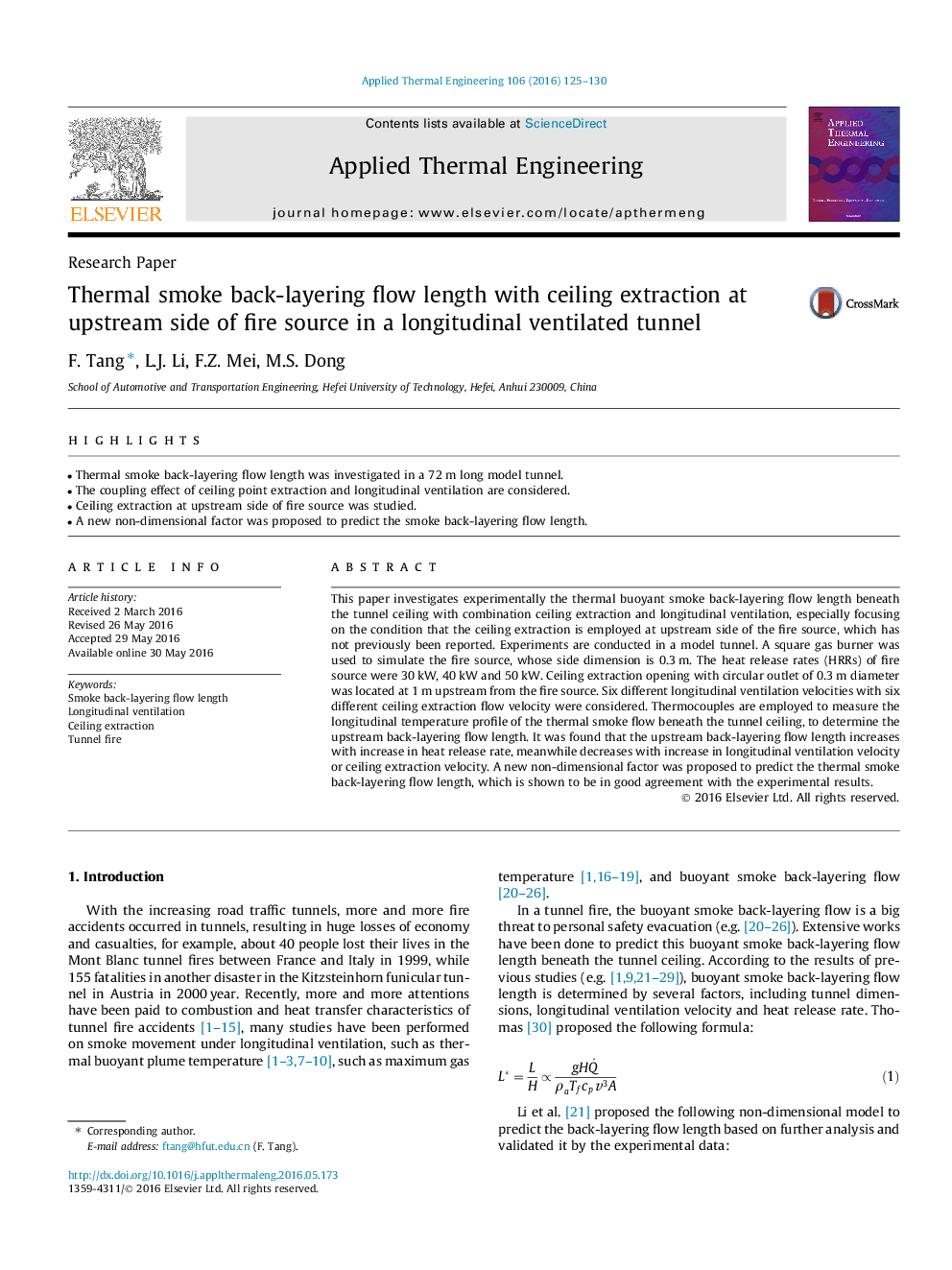| Article ID | Journal | Published Year | Pages | File Type |
|---|---|---|---|---|
| 7047391 | Applied Thermal Engineering | 2016 | 6 Pages |
Abstract
This paper investigates experimentally the thermal buoyant smoke back-layering flow length beneath the tunnel ceiling with combination ceiling extraction and longitudinal ventilation, especially focusing on the condition that the ceiling extraction is employed at upstream side of the fire source, which has not previously been reported. Experiments are conducted in a model tunnel. A square gas burner was used to simulate the fire source, whose side dimension is 0.3Â m. The heat release rates (HRRs) of fire source were 30Â kW, 40Â kW and 50Â kW. Ceiling extraction opening with circular outlet of 0.3Â m diameter was located at 1Â m upstream from the fire source. Six different longitudinal ventilation velocities with six different ceiling extraction flow velocity were considered. Thermocouples are employed to measure the longitudinal temperature profile of the thermal smoke flow beneath the tunnel ceiling, to determine the upstream back-layering flow length. It was found that the upstream back-layering flow length increases with increase in heat release rate, meanwhile decreases with increase in longitudinal ventilation velocity or ceiling extraction velocity. A new non-dimensional factor was proposed to predict the thermal smoke back-layering flow length, which is shown to be in good agreement with the experimental results.
Related Topics
Physical Sciences and Engineering
Chemical Engineering
Fluid Flow and Transfer Processes
Authors
F. Tang, L.J. Li, F.Z. Mei, M.S. Dong,
